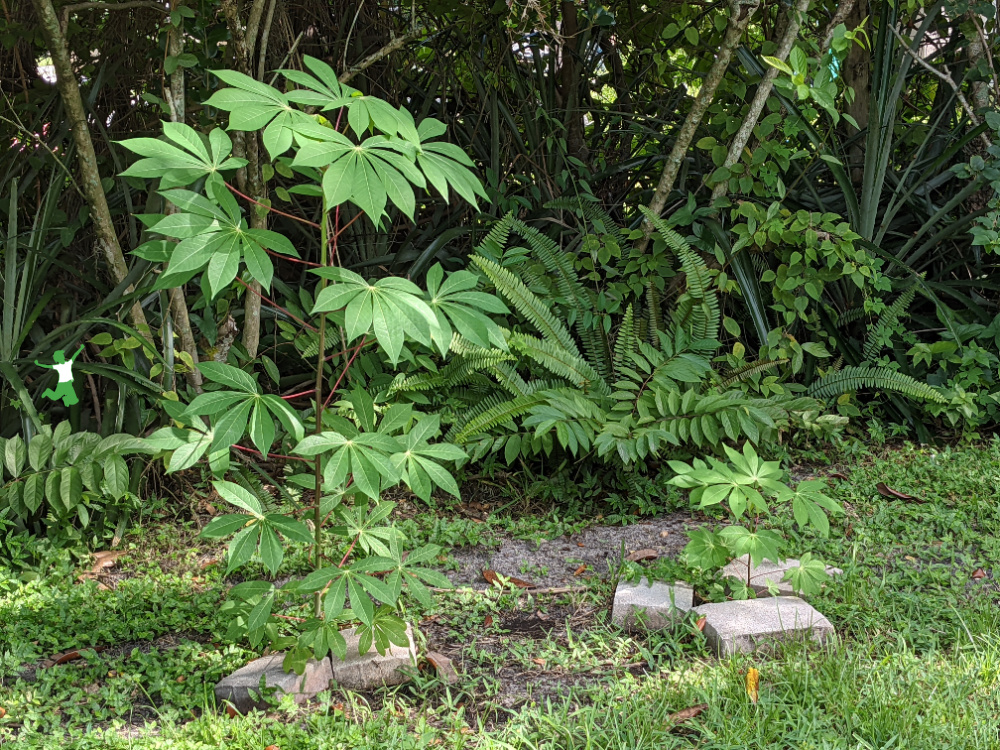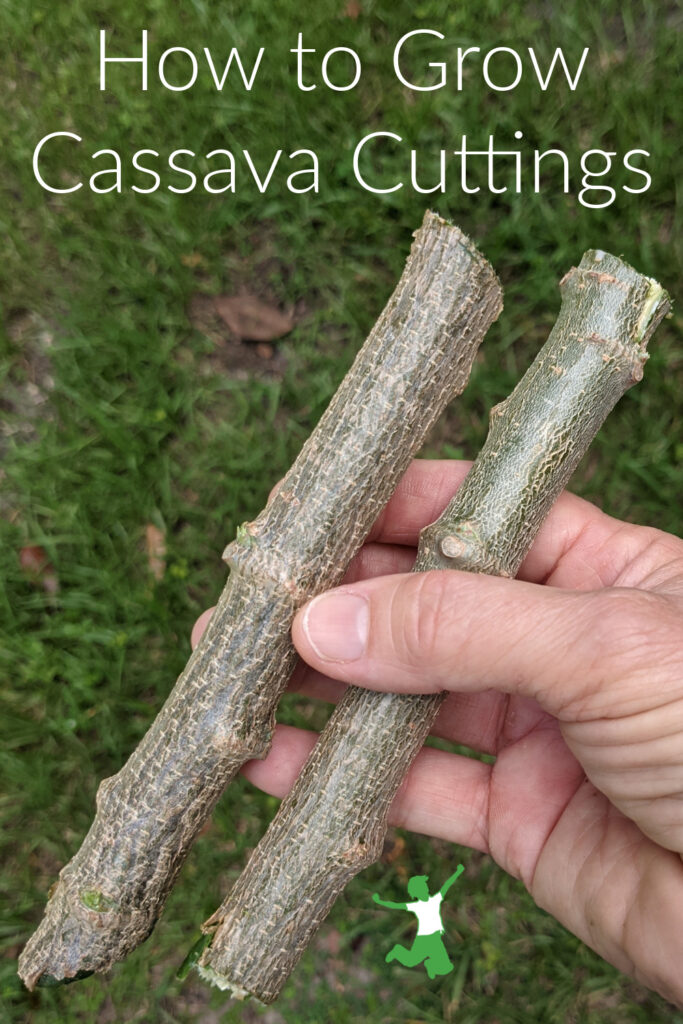Table of Contents[Hide][Show]
How to cultivate and harvest cassava root, the easiest calorie-dense food plant to grow and the ninth most popular crop in the world.

I was excited to harvest my first cassava plant last week, and I wanted to share the results with you!
Cassava is, by far, the easiest food-producing plant I have ever attempted to grow.
It’s far easier than potatoes, another popular choice for a calorie-dense food plant.
For novice gardeners who live in a temperate clime, cassava is an excellent choice to gain confidence by getting a big win on the board quickly.
Optimal Clime
Even if you get the occasional freeze, cassava can still be a good choice to grow.
For example, last winter we had several nights below freezing.
I wasn’t exactly sure how to protect my cassava plants as they were all over 8 feet tall.
This was far too high to cover. So, I chose to cut them back to a few inches above the ground and then protect the roots with a tarp.
The result was exactly as I had hoped.
The cassava plants grew back to full height in the Spring with no harm to the edible roots in the ground!
Cultivating Cassava
If after seeing this video below, you would like to try your hand at growing cassava, I would recommend finding a good source of cassava cuttings.
Growing cassava from cuttings is nearly foolproof and ensures a sweet root.
Growing from seed risks a more bitter-tasting result.
A 5-6 inch section of the stem is all you need. So if you know someone who grows cassava, ask them for a few cuttings when they harvest the root! The picture below gives you a rough idea of the size that is ideal.
Plant the cuttings in soil and water every other day or so. In my experience, once established, it grows well no matter if the soil is moist, dry, or just right.
You can plant the cutting either vertically with an inch or two sticking up out of the soil or horizontally an inch or two deep in the soil.
I’ve tried both approaches and horizontally is my preferred method.
Cassava sprouts and grows like a weed! Literally within a few days, the new cassava plant will be poking out of the soil growing happily.
The soil doesn’t even have to be that great, although certainly nutrient-rich soil is going to produce a more nutritious root.
Cassava grows very well in sandy soils too.

Harvesting the Roots
When your cassava plant is about a year old, it is time to harvest.
As you can see in the video, my first plant was knocked over in a storm with huge roots exposed.
I actually probably should have harvested it a couple of months earlier as some of the root was too woody to process and eat.
In other words, you don’t want to leave the cassava plant too long or the roots will gradually become inedible.
Another suggestion is to at least clean and peel the roots within a couple of days of harvest.
Deterioration of the root rapidly occurs, so to ensure you get as much edible cassava as possible, clean and peel the roots quickly and freeze what you won’t cook right away.
Cooking Cassava
My next post and video about cassava that I’m working on right now is how to prepare and enjoy it on the home menu!
Stay tuned!








I am just very very curious does it grow well in Ottawa , Ontario ? And thks for all the great information